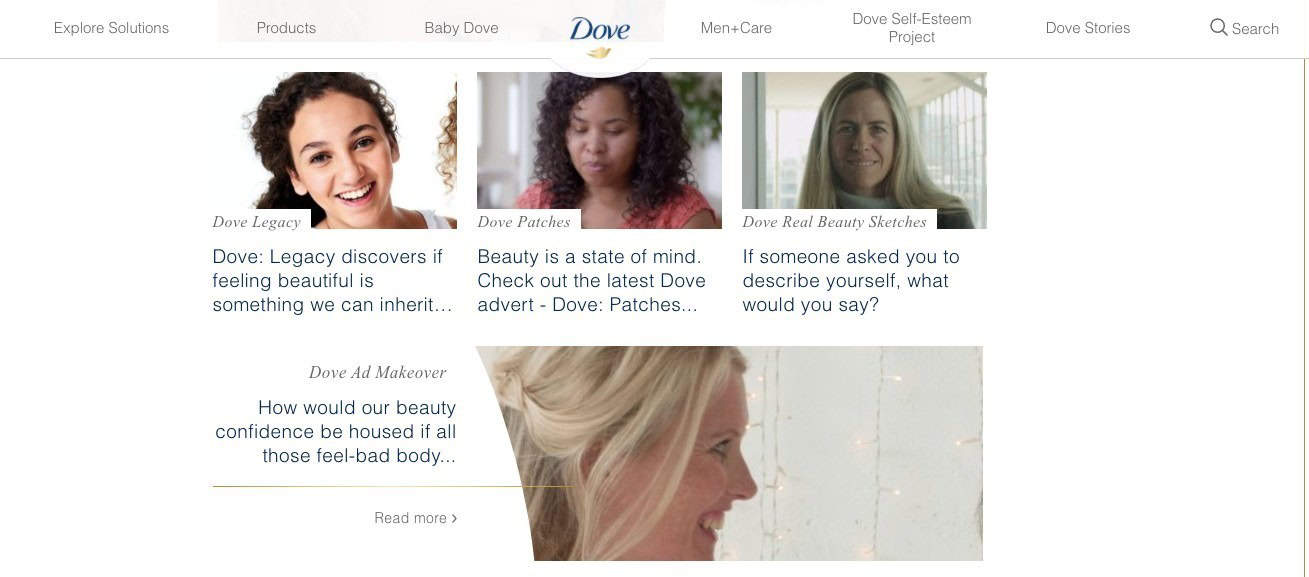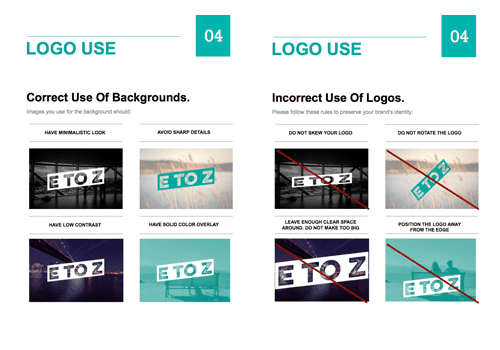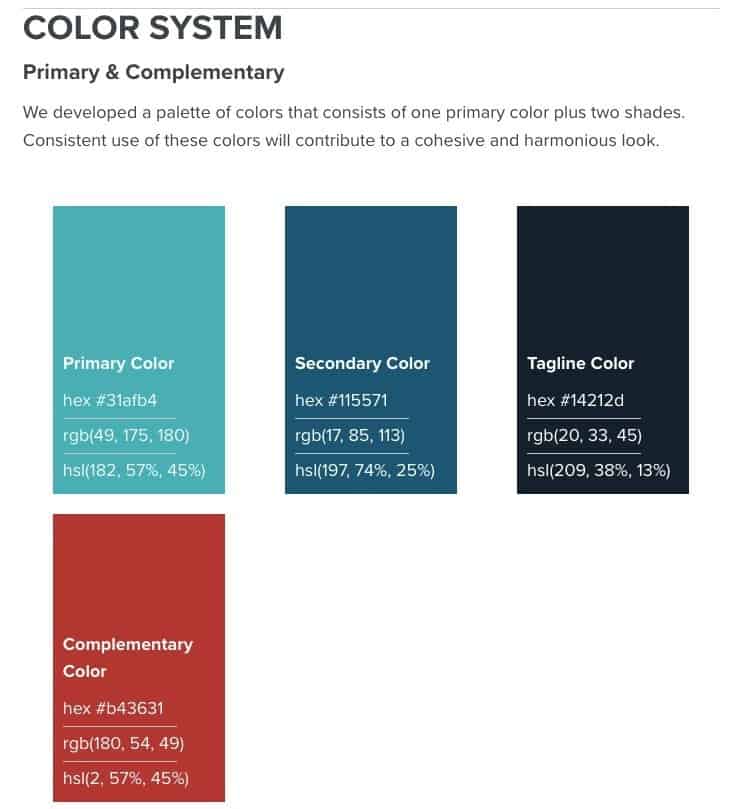
After months of research and brainstorming, you’ve finally created the perfect brand strategy for your company. You’ve designed a beautiful logo, figured out your brand’s color palette, and nailed your brand story.
But how will you make sure other companies talking about your services represent your brand with the same degree of accuracy and precision? How do you ensure that new employees know the ins and outs of your brand’s voice, personality, and tone?
That’s where a brand style guide comes in handy.
A brand style guide is your brand’s rulebook that puts into writing all the specifications of your branding strategy, including your brand story, logo, color palette, typography, and more. You can think of your brand’s style guide as a reference book that people can use a guide for representing your brand.
There are 6 key elements of a brand style guide:
Before we dive in to the details of each, it’s important to first understand….
Every business needs a brand style guide to establish the consistency of their brand’s image. Branding is about building up public perception, something that can only be achieved when you communicate a clear, unified message about who your company is.
The more consistent your brand image, the more customers will resonate with your company. Maybe you’ll make them laugh, or resolve their frustrations and fears. Maybe you’ll inspire them and encourage them to be better. Maybe they’ll feel valued and fulfilled by supporting a company that’s committed to causes they believe in.
Together, the above 6 elements—your story, voice, logo, color palette, imagery, and typography—shape your brand. Create a brand style guide so you can put these specifications into writing. That way, you’ll build the consistency you need to cultivate your brand’s image, connect with customers, and stand apart from the competition.
If you make a logo with our logo design tool you’ll automatically get a Brand Book—our version of a brand style guide—that lists the best fonts, colors, logo iterations, etc. for your brand. But, if you need to create one from scratch, here’s what you need to know:
Ok. Now that you know why you need a brand style guide. Let’s look at how to create one.
A brand story is one of the six main components of your brand style guide. A brand story is a narrative about your company that centers on your company’s values and reasons for existence. A typical brand story includes your company’s origins, the problem it sets out to solve, the mission and values it carries forward, and its vision for the future.
Your brand story sets the tone for your company’s decision-making process within the organization. It’s also guides the way you interact with your customers and helps you resonate with customers who identify with your mission and values.
Fashion retailer Everlane has a great brand story that is the driving force behind their company’s products and their customer interactions. The company’s story centers on three values: “Exceptional quality,” “Ethical factories,” and “Radical Transparency.” They set out to disrupt a status quo in retail—high-priced garments of relatively low quality from morally questionable sources—and instead operate on the principle of fairness with both their employees and their customers.
This story forms the basis of Everlane’s interactions with their customers. Their web content, for instance, shows transparent glimpses into factories and explains the garments’ price breakdown.

To craft your own brand story, think about your company’s origins, mission, and values. Why, exactly, does your company exist? What problems does it set out to solve? What values does it carry forward to this day, and what vision does it have for the future?
Turn these ideas into a short and simple narrative that you can use to guide your brand’s logo creation, imagery and color palette, and personality overall.
In addition to including your brand story in your style guide, you’ll want to include your brand voice. Your brand voice is another defining element of your brand; it’s the way you speak with your audience, and the personality traits and values you imply as a result.
One example of a compelling brand voice is that of Dove, which aims to be uplifting and empowering in its web copy and ad content. “At Dove, we have a vision of a world where beauty is a source of confidence, not anxiety,” the brand coos. Dove’s brand voice is friendly, inspirational, encouraging, and soothing, and the reason its voice is so powerful is precisely because the brand sticks to this voice so consistently across its copy.

To define your brand voice, come up with a handful of words that best describe your brand. Are you quirky and light-hearted, or serious and authoritative? Choose words that best define you, and write using the language and tone that reflects these characteristics.
Be sure to include your brand voice in your style guide so that people use a consistent voice across all written company materials.
The third component of your brand style guide is your logo. Your logo is the basis for many people’s first impression of your brand, so it needs to be something that communicates what you do and who you are.
You can communicate this message through a combination of your logo’s overall format (text-based, image-based, or a combination of the two), icons, typography, color palette, and layout.
Even after you come up with your standard logo design, you’ll still need to figure out a few key factors for your brand style guide. Take note of how your logo should appear across colored, black, and white backgrounds, and be clear about any color variations you’ll need to apply for different backgrounds.
Also, note your logo’s proportions so that it can be resized with accuracy. And finally, provide instructions about how much white space should be used around your logo.
Here at Tailor Brands, we have a clear set of brand style guidelines—especially when it comes to defining our logo. For example, our logo should appear red on a white background, and should appear white on a background of any other color. This consistency is important for building our brand’s authority and recognition.


Now, we’ve come to the fifth component of your brand style guide: Your choice of fonts and typography.
Just as with your logo guidelines, your font guidelines need to be very specific to ensure that your brand is represented with accuracy and precision.
Be clear about your brand’s typefaces; specify which typefaces you use for your logo, tagline, website headings, body text, and more. Also, include your kerning (spacing between letters) and tracking ratios to keep your style consistent when your logo is resized. Finally, specify whether your copy is aligned left, aligned right, or centered.
Our primary typeface here at Tailor Brands is Proxima Nova. Being clear about our typeface guidelines helps us achieve brand consistency across all channels.

The sixth and final part of your brand style guide are your image guidelines. Your website is probably chock full of images within your blog posts, web copy, and more. All of these brand images are, of course, different from one another. But at the same time, they do require some thematic consistency in order to create a unified brand message.
To create your image guidelines, start by selecting the best performing images on your site. Think about whether those images have any qualities in common. Maybe they all take the form of playful illustrations, or perhaps they share a common tone.
Are they inspirational? Quirky? Professional? Take notes on the shared traits of your best performing images, and use that as a set of guidelines in your style guide.

Every company, big or small, needs a brand style guide to define and outline the different components of their branding strategy. If you’re just getting started defining your brand, we suggest looking through your existing content and setting aside the images, blog posts, and anything else you see that best aligns with your company’s brand.
Once you’ve identified this content, take a closer look. What does it represent about your brand’s personality, mission, or values? Use those samples to guide you as you craft your brand style guide.
This portion of our website is for informational or educational purposes only. Tailor Brands is not a law firm, and the information on this website does not constitute legal advice. All statements, opinions, recommendations, and conclusions are solely the expression of the author and provided on an as-is basis. Accordingly, Tailor Brands is not responsible for the information and/or its accuracy or completeness. It also does not indicate any affiliation between Tailor Brands and any other brands, services or logos on this page.
Products
Resources
©2025 Copyright Tailor Brands